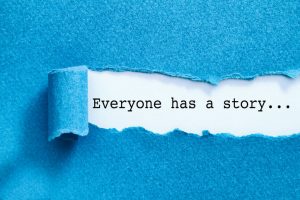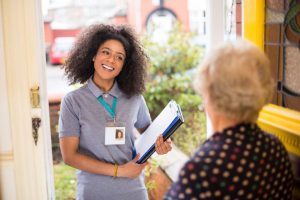7 Strategies to Combat Community Opposition to Public Schools
5/7/2018

It is not a secret that our public schools are under more scrutiny and they are held to higher levels of accountability than ever before. I would like to believe public educators are not afraid of accountability. We believe in setting standards and expectations for all students and all staff members. What is most difficult is when educators are not part of helping set these levels of accountability and are then lambasted for not meeting them.
In my local community, a small faction of people have created a very loud voice of opposition against many facets of the public schools. Administrative decisions on the budget, salaries, and insurance are a few of the areas in which this group vocalizes disapproval. Unwanted taxation is a tagline among many of these individuals. Though this group touts "research" as a means of supporting their views, one piece of information can become distorted for an opposing media blitz without ever understanding the larger picture. These people do not want to take the time to learn more.
As an educator it is easy to support the decisions that are being made by school officials, as well as getting the necessary information out to the public that further reinforces those decisions. One has to be willing to learn more before making a hasty decision… thing that is right for students is at risk here.
We can be sucked in to the negativity and start counteracting every comment on social media, newspapers, or on the television. Not only is this strategy unsuccessful most times, it draws your name out to the critics and you may become the next target.
To combat these behaviors, comments, and viscous attacks, we must use education by telling everyone "what is right" with our school systems. This seems the most ethical strategy. We need to steer away from the negative draw that pits us against the "opposition group." We must illustrate how kindness changes people, how tolerance makes us more aware of our community needs, as well as placing our self in someone else's shoes and understanding their stories through empathy.
Here are seven strategies that communities and educators can use to combat opposition to public education.
1 - Celebrate The Positives Through Social Media
Have you heard of the #GoCrickets revolution? A small school district in Wisconsin is making waves across the country because of a hashtag on Twitter. The superintendent, Joe Sanfileppo, understands how to create a rage, or brand, around his students and community. People across the United States can be seen with a "Go Crickets" t-shirt celebrating the feats and accomplishments of their students. Whenever something amazing happens, a picture is taken to document it and it's hashtagged out to the Twitterverse (Take some time now and look it up on Twitter).
Flooding social media with "what is right" with public education can be powerful. In much the same manner that negative press can tear down a community, building a brand with a strong foundation can counteract these attacks. It makes it more difficult for an opposition group to gain momentum and tear it down.
Let us be honest, schools do not do enough celebrating "what is right." For the most part, we are too humble of people to be talking about ourselves all the time. We must relinquish this past practice and celebrate, develop a brand, and create a rage over what are students are doing daily, as well as staff members.

2 - Tell Your Story
We must tell our story of what is going on in our classrooms, hallways, recess, and even community outreach. The majority of what students are doing is positive, and nothing is more powerful than illustrating kindness in a school.
In the past seven years at my school, we have focused on culture over strategy. What does this mean? It means we have put more time and effort into creating a place where students and staff members want to work and learn than any other aspect. We believe that if both students and staff look forward to coming to school, we will have a larger impact on academic achievement.
The latest research from Dr. Bill Daggett and John Hattie both state the effect size of the efficacy of relationships in schools is tremendous. Dr. Daggett states that the top 1% of the top 1% of the most effective schools all have the same thing in common, a positive school culture. In Dr. John Hattie's research, he states that "teacher efficacy" is the most important strategy schools can implement.
We must tell our story about the acts of kindness, the ability for us to learn more about ourselves and celebrate our diversity, as well as building student empathy.
3 - Community Forums
Invite people to talk civilly about public school challenges in community forums. Set dates, possible questions to ask, and get as much information out to the public before the forum starts. In this fashion, attendees can be better informed and ask more pertinent questions to inform the decisions that are being made by school boards, administration and educators in the school district.
Community forums can be set up in a multitude of formats. Usually, someone leads through dissemination of information, discussion, and allows time for a Q and A portion. While not all people will attend, the contents of the community forum can be recorded and posted online. Those who could not attend can still view and take part in the post discussion.
Another effective strategy is giving each community forum a theme or main topic of discussion. In this format, community members can chose which community forum to attend. Forum planners must still make sure there is time for open discussion, especially if questions being asked by audience members do not align with the theme or main topic. The key is for everyone to be heard.
Becoming informed citizens starts with wanting to learn more before we give our opinions. Too many times people give their two bits before asking questions to learn more.
I hold a positive presupposition that all educators are trying to do what is best for students in the decisions they make. It would be difficult to find an administrator that is only out for themselves and makes all decisions according to their personal needs or wants.

4 - Door-to-Door Discussions
Door-to-door discussions have been found to be the most effective strategy for bringing about positive change. This can be seen as the most intrusive strategy, especially in the time of "keyboard warriors." A "keyboard warrior" is someone who makes outlandish statements online, and statements they normally would not make in person. Social media has created a platform for everyone with an opinion on anything to have a voice. While I believe this can make our society stronger, it can also have a negative impact if the "keyboard warrior" is looking to "troll" or "trash" individuals.
Door-to-door discussions are the most invasive into people's lives. Canvassers or surveyors show up on your doorstep and ask questions. There are a lot of quick decisions that must be made, some may be comical: 1) should I answer the door, 2) should I answer the questions when they ask, 3) should I let them know my beliefs, and 4) how do I end this conversation as quick as possible. I have even heard of people doing army crawls across their floor to avoid answering the door.
If we have educators going door-to-door with the latest information and research, they can be great agents for change. They must practice their prompts, even having possible answers to these questions, as well as follow up questions. This will make going door-to-door more successful and result in the best chance at effecting change.
5 - Writing
Blogging, writing, and documenting what is going on in schools, and specifically classrooms, helps others see "what is right" in education, currently. Most adults think about school through the experiences they had as students. The education environment has changed significantly. The most noticeable would be the responsibilities that society, even us as educators, have placed back onto schools to remediate.
Many districts support students with food at school and at home, clothing, health care, mental health support for students, and even in-home support for families. Some see this as a shift of responsibility from families to the school. Others see this as a logical step for schools as they know their students and families so well.
We need to be telling the stories of not only our academic successes, but also the stories of the socio-emotional victories connected to our school. While FERPA (Family Education Rights of Privacy Act) may limit some of the stories about individual students, even leaving these names and family circumstances out, we can still paint the picture of what educators deal with on a daily basis.

6 - Invitation to Walk With You
Many educators may shy away from a strategy that invites the opposition into their place of work. There is nothing more powerful than having someone follow you while you are on the job. The community will quickly see that the concept of an educator or principal has changed dramatically. Rarely will you find a principal that spends a majority of their time behind their desk, and likewise, will not find a teacher giving 30-45 minute lectures and calling it sound instruction.
Engagement and effective communication strategies are the most noticeable difference in the past couple decades. Educators have to compete with video games, hand held mobile devices, and instant gratification. The best educators are finding new ways to add movement and engagement strategies into instruction.
A recent article I wrote, A Principal's 12,000 Steps, outlines a typical day in the life of a principal. In one day, I was able to support families with food boxes, students with behaviors, instructional and behavioral strategies with teachers, supervising students in a multitude of areas, as well as covering jobs because of absent staff.
Walking with an educator will give you a visual and emotional connection to what schools have become and continue to transform. We must invite community members into our schools to help be part of the solution.
7 - Divide and Conquer
One strategy, similar to the strategies listed above in community forums and inviting people into our schools to follow me around, is the idea to divide and conquer the opposition. After talking with factions of people from the opposition, find people that may align with some piece (or small portion) of your ideology. Discuss with them in detail on the benefits of public education, the great things going on, and how to not only participate, but to get engaged in making schools a better place for students and families to learn.
Continuing this process with more and more people will help combat the opposition against public schools. When we chose education as a profession, many of us would have never guessed we would need to be advocating for education in the ways we are currently. Advocating for public education has never been so difficult, but we must do it in order to create a learning environment that is best for students, as well as creating a place where we all want to work and learn!
- Learning How to Say No and Set Boundaries with Parents - November 21, 2022
- If You Had Only One Behavior Strategy to Use in Your Classroom, What Would It Be? - September 26, 2022
- Live Your Code: 7 Strategies That Will Help You Be the Most Effective Educator You Can Be - August 15, 2022










